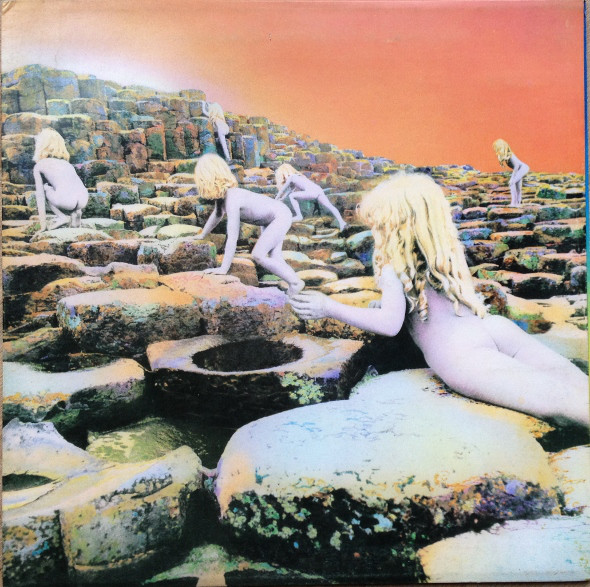
Houses of the Holy (1973)

1. The Song Remains the Same
2. The Rain Song
3. Over the Hills and Far Away
4. The Crunge
5. Dancing Days
6. D'yer Maker
7. No Quarter
8. The Ocean
By the time Houses of the Holy arrived in 1973, Led Zeppelin had already released four albums that veered between genre-defining and generation-defining. This one didn’t exactly break the streak. What it did do, however, was showcase a band becoming increasingly comfortable in the studio—perhaps *too* comfortable in places. A bit more layering, a few more effects, and the occasional indulgence. Still, if one must nitpick a masterpiece, it’s only because Zeppelin had set their own bar unreachably high.
The album's diversity is both its strength and its slight undoing. This is the record where Zeppelin begin to loosen the reins and explore styles once considered out of their jurisdiction. There’s funk (The Crunge), reggae-by-way-of-England (D’yer Mak’er), and even a flirtation with dance grooves on Dancing Days. Had any other band attempted this, it might have sounded like genre tourism. But Zeppelin, as ever, manage to make it feel completely natural. It helps that they never abandon their signature identity. Whether Robert Plant is crooning or howling, or whether Page is riffing or drifting through reverb-heavy atmospheres, it’s still unmistakably Zeppelin. (And for the record, D’yer Mak’er is pronounced “Jamaica”—a pun lost on generations of radio DJs who continue to mangle it.)
Now to the minor quibbles—observations offered with due reverence. The Rain Song and No Quarter are the longest tracks here, and both lean heavily into the keyboard textures of John Paul Jones. The former is a lush, meandering ballad that practically melts at the edges, while the latter is a slow-burning, psychedelic dirge with enough echo and menace to qualify as Zeppelin’s contribution to the prog canon. Both are superb. Arguably *too* superb. Each one casts such a strong mood that it unbalances the record slightly; when the following tracks arrive, they feel like they’re barging in uninvited. A one-minute trim from each might have helped the flow, but again, this is art, not carpentry.
Elsewhere, Over the Hills and Far Away delivers one of the most satisfying acoustic-to-electric transitions in the band’s catalog—until the final 40 seconds, which devolve into some harpsichord-like noodling that seems to serve no purpose other than to provoke the “next track” button. The Ocean is a bruising closer with an infectious groove, but its sudden a cappella drop-in feels more like a studio dare than a production choice. And The Crunge, while admirably funky, finds Plant straining to imitate James Brown’s vocal register—an experiment that might have fared better with less effort.
But these are minor faults in what is otherwise another towering achievement. Zeppelin’s willingness to push their own limits, even at the cost of a little unevenness, is part of what kept them ahead of their peers. Houses of the Holy may not be as universally adored as its numbered predecessors, but for many, it’s the sleeper favorite—the one that reveals new textures with every listen. And for all its stylistic wanderings, it still thunders when it needs to, whispers when it wants to, and refuses, once again, to be boxed in.
Go back to the main page
Go To Next Review